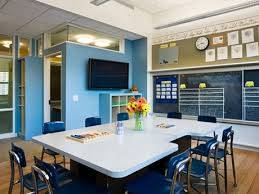INNOVOTEK
A blog about the news of the latest technology developments, breaking technology news, Innovotek Latest news and information tutorials on how to.
Classroom Physical Design Influencing Student Learning and Evaluations of College Instructors: A Review of Literature
- Font size: Larger Smaller
- Hits: 11096
- 0 Comments
- Subscribe to this entry
- Bookmark
 Introduction
Introduction
Today's classrooms, including studios, laboratories, auditoriums, and other indoor environments, have a wide variety of physical structures that support and facilitate student learning. There is no perfect classroom physical design to accommodate all types of academic activities. Because students learn in diverse ways, higher education administrators must realize that classrooms should be designed to promote various ways in which students acquire knowledge (The L-Shaped Classroom, 2007). Well-designed classrooms not only promote teamwork and interest in student learning, but also encourage active class participation (Niemeyer, 2003). Although college classrooms with permanently attached seating and furnishings are beyond the instructors' control, they may partially influence student evaluations of college instructors in terms of the overall teaching effectiveness and performance (Safer et al., 2005).
Students are not the only ones who feel helpless and hopeless when the built classroom environment is beyond their control (Veltri et al., 2006). Faculty also feel helpless and sometimes even fearful (Veltri et al., 2006). Niemeyer (2001) does not believe faculty should be fearful of their teaching environment. Unfortunately, classrooms are not always a location that empowers faculty and that is conducive to student learning. Physical settings and factors can motivate or discourage many room occupants (Lackney, 1999). Hence, a classroom's arrangement of visual, furniture, and equipment should be carefully considered in order to empower both instructors and students (Niemeyer, 2001).
College classrooms can be viewed from a physical perspective such as size, shape, interior lightning, finishes-color, thermal condition, noise level, furniture and seating arrangement, as well as location and availability of modern technology (Table 1). The objective of this paper is to review specific classroom physical attributes that profoundly impact student learning and their overall ratings of college instructors.
Major Classroom Physical Attributes
Size and Shape
Student assessments of the teaching performance and effectiveness of their college instructors are influenced by physical structures of the classroom while taking into account the number of enrolled students (Safer et al., 2005). Good chalkboards or whiteboards and latest teaching technologies are important, but so are the size and shape of the room (Safer et al, 2005). Large, vault-like classrooms remain architecturally splendid, but are inadequate in providing the basic interaction required by instructors and students (Planning a Classroom, 2007). Students often have experienced great difficulty making eye contact with the instructor. A friendlier and more functional classroom shape would be a broad rather than a long room, so that student-instructor eye contact is possible, thus reducing the distance between students and instructors (Niemeyer, 2003).
Furniture and Seating Arrangement
Furniture arrangement in classrooms may influence student learning and adversely impact student evaluations of college instructors. Uncomfortable or inadequate furnishings may shift students' focus away from instructors or learning materials being presented (Veltri et al., 2006). Creating flexible classrooms imply that designing spaces with proportions to accommodate a variety of academic functions. Designing classroom space should exhibit column-free space and minimizing permanently attached hardware-desks, seating, and even today's latest technology (Calcara, 1999; The L-Shaped Classroom, 2007).
In terms of seating arrangement, students sitting in front of classrooms have a greater visibility to instructors, chalkboards or whiteboards, and projector screens compared to students sitting far away (Planning a Classroom, 2007). A greater number of rows and seats in classrooms can lower the average student evaluations of overall teaching effectiveness.